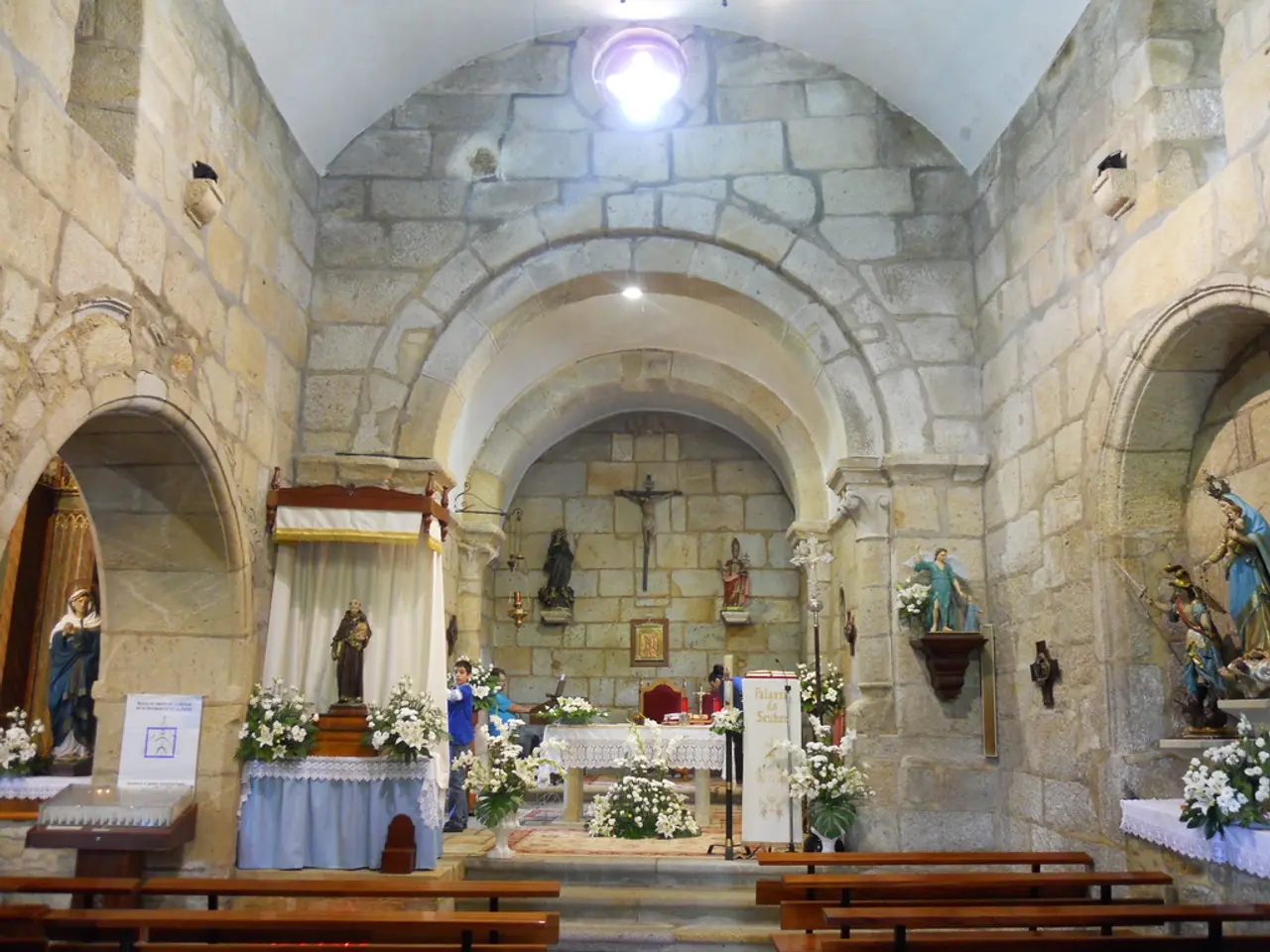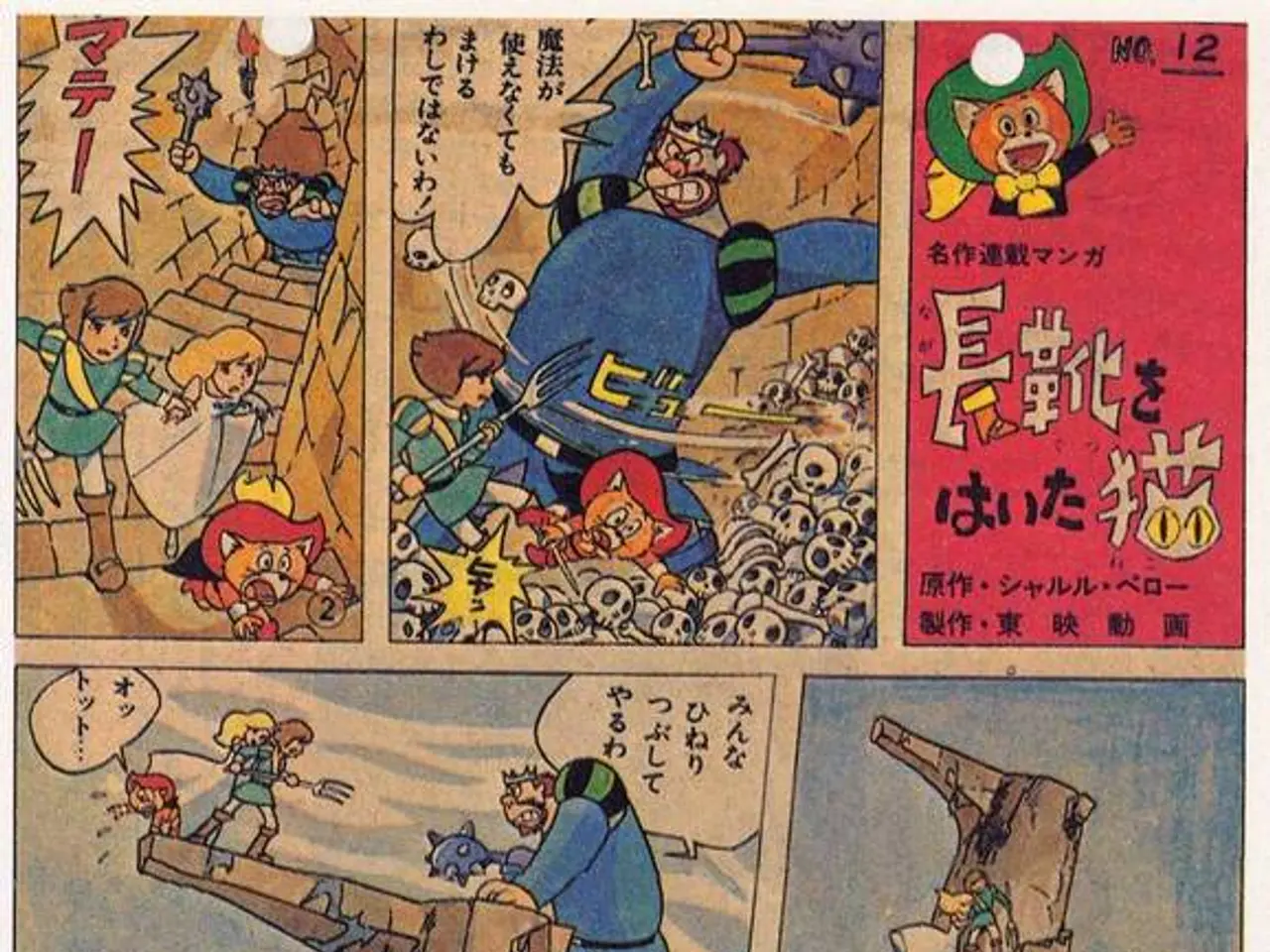Various additional entities, enumerated as follows:
In the heart of Gerresheim, a surprise discovery has been made that offers exciting glimpses into the town's economic history at the beginning of the 19th century. Archaeological remains of a red tannery have been uncovered at the Alter Markt, shedding light on the town's past industry and linking it to its present.
Red tanneries were significant industrial enterprises in several German towns during the early 19th century, and Gerresheim was no exception. These tanneries processed animal hides using iron oxide-based dyes, producing red-tinged leather, which could have been a notable local economic activity contributing to employment and trade.
The discovery of the tannery remains would likely have been an archaeological or urban excavation finding, revealing the historic industrial activity beneath modern urban settings, possibly during construction or renovation works. The tannery was located near St. Margaret's Basilica and the Quadenhof, an unusual yet intriguing location for such an industrial enterprise.
The owner of the tannery was Caspar Körfgens von Gerresheim, who was listed as a "red tanner" or "lohgerber" in the official address book for Rhineland-Westphalia from 1833. The name of the former property owner of the tannery was determined from a 1830 draft.
The further handling of the finds and the scientific methods for their investigation will be determined in the course of the excavation. The LVR Office for Monument Protection in the Rhineland will collaborate in the excavation and scientific methods for investigation.
The archaeological remains will provide new insights into Gerresheim's economic history at the beginning of the 19th century. The leather production process involved cleaning hides on a scraping tree before moving them to so-called loh pits, which were containers dug into the ground. Hides remained in the tanner's liquor, an extract of woods, leaves, bark, and specific tree fruits, for up to one and a half years.
The discovery of the red tannery at Alter Markt is significant because tanneries often affected the surrounding environment due to the chemicals used, influencing urban development and sometimes leading to the relocation or decline of such industries as cities modernized. The economic impact of red tanneries on Gerresheim during the early 19th century remains to be researched, but it is clear that the industry played a crucial role in the town's history.
The city of Gerresheim is excited about the potential insights that the excavation of the red tannery remains will provide. The discovery is a testament to the rich history hidden beneath the modern urban landscape and serves as a reminder of the town's industrial past.
The red tannery at Alter Markt, a significant industrial enterprise during the early 19th century, could have had a substantial impact on Gerresheim's economy, providing employment, contribute to trade, and potentially influencing the town's development. The uncovered remains of this tannery, owned by Caspar Körfgens von Gerresheim, will offer further insights into the town's economic history and the role of the manufacturing industry in finance during that era.




